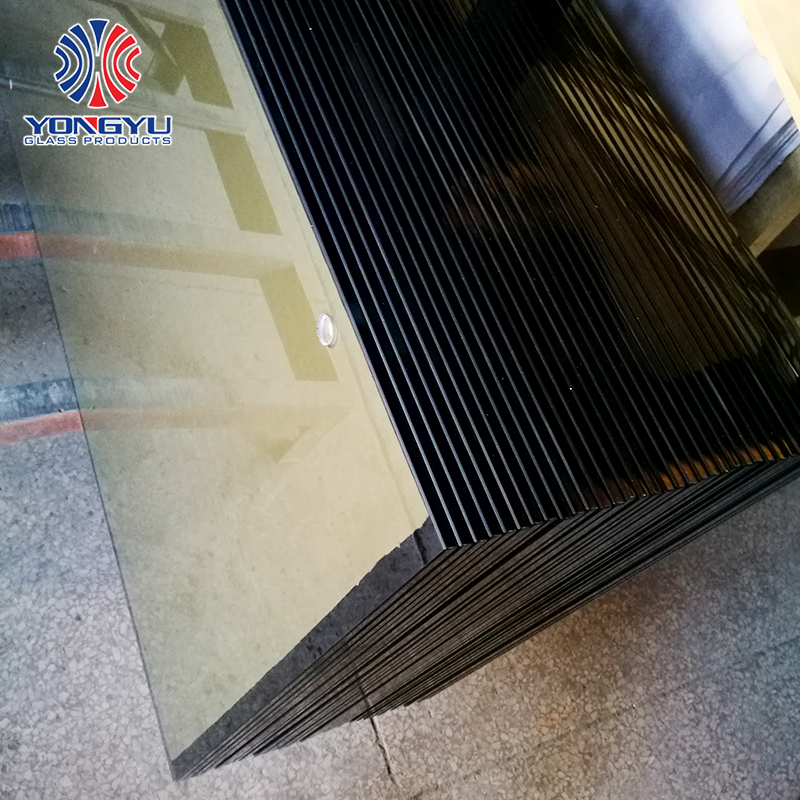China Factory for Glass Curtain Wall R-Value - Tempered Glass – Yongyu
China Factory for Glass Curtain Wall R-Value - Tempered Glass – Yongyu Detail:
Basic Info
Tempered glass is one kind of safe glass being produced by the heating flat glass to its softening point. Then on its surface forms the compressive stress and suddenly cool down the surface evenly, thus the compressive stress again distributes on the glass surface while the tension stress exists at the center layer of the glass. The tension stress caused by outside pressure is counterbalanced with the strong compressive stress. As a result the safety performance of glass is increased.
Fine performance
Tempered glass’s anti-bent strength, its anti-strike strength, and heat stability are 3 times, 4-6 times and 3 times to ordinary glass respectively. It’s hardly brakes under outside action. When broken, it becomes small granules safer than ordinary glass, no harm to the person. When used as curtain walls its anti-wind coefficient is much higher than the ordinary glass.
A. Heat-Strengthened Glass
Heat-strengthened glass is flat glass that has been heat treated to have a surface compression between 3,500 and 7,500 psi (24 to 52 MPa) which is twice the surface compression of annealed glass and meets the requirements of ASTM C 1048. It is intended for general glazing, where additional strength is desired to withstand wind loads and thermal stresses. However, heat-strengthened glass is not a safety glazing material.
Heat-Strengthened Applications:
Windows
Insulating Glass Units (IGUs)
Laminated Glass
B. Fully Tempered Glass
Fully tempered class is flat glass that has been heat-treated to have a minimum surface compression of 10,000 psi (69MPa) resulting in resistance to impact of approximately four times that of annealed glass. Fully tempered glass will meet the requirements of ANSI Z97.1 and CPSC 16 CFR 1201 and is considered a safety glazing material.
| Application Use: Storefronts Windows Insulating Glass Units (IGUs) All-Glass Doors and Entrances |
Sizes: Minimum Tempering Size – 100mm*100mm Maximum Tempering Size – 3300mm x 15000 Glass thickness: 3.2mm to 19mm |
Laminated Glass vs. Tempered Glass
Like tempered glass, laminated glass is considered a safety glass. Tempered glass is heat treated to achieve its durability, and when struck, tempered glass breaks in to smooth-edged small pieces. This is much safer than annealed or standard glass, which can break into shards.
Laminated glass, unlike tempered glass, is not heat treated. Instead, the vinyl layer inside serves as a bond that keeps the glass from shattering into large shards. Many times the vinyl layer ends up keeping the glass together.
Product Display
 |
 |
 |
 |
 |
 |
Product detail pictures:






Related Product Guide:
With a complete scientific quality management system, good quality and good faith, we win good reputation and occupied this field for China Factory for Glass Curtain Wall R-Value - Tempered Glass – Yongyu , The product will supply to all over the world, such as: Turkmenistan, French, Australia, Our company has already had a lot of top factories and qualified technology teams in China, offering the best goods, techniques and services to worldwide customers. Honesty is our principle, skilled operation is our work, service is our goal, and customers' satisfaction is our future!
We always believe that the details decides the company's product quality, in this respect, the company conform our requirements and the goods are meet our expectations.



